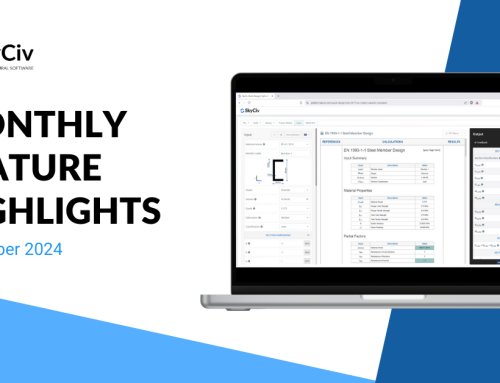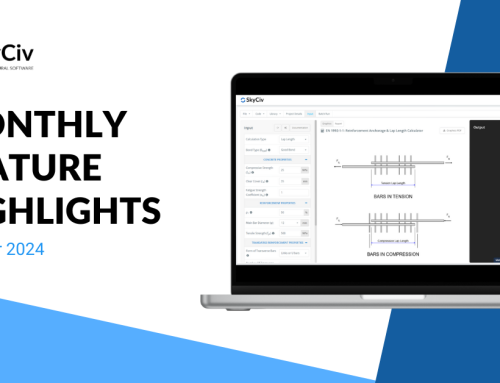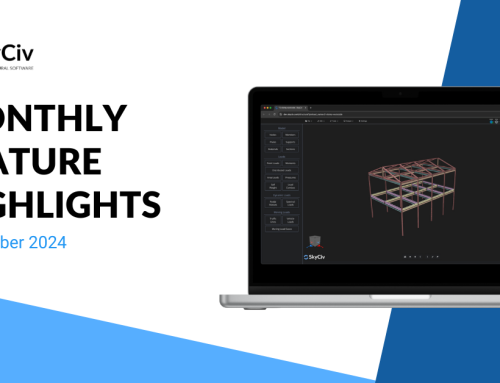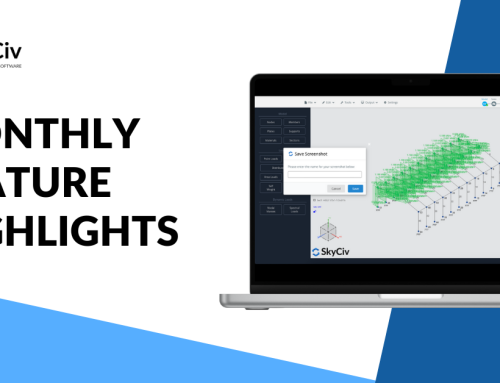We’ve all been there before. You’re working on a project and looking to design a column using a material or shape you’re not too familiar with. You run it through your software’s design check and it comes back with a Pass. But you’re not too confident in the result. In fact, you have some questions or concerns about it. So you spend more time doing hand calcs and trying to figure what in the world the software is doing to calculate that value, or apprehensively trust the result at face value.
As Structural Engineers we’ve all experienced this pain. So we made a promise to the industry; make structural design software that is transparent, with clear step-by-step reporting. It seems so intuitive, but it’s something that’s lacking in our industry. In today’s article we’ll explore SkyCiv’s decision to provide thorough design reporting, why it’s important and how it’s helping our users work faster and with more clarity.
Why do we have open design reporting?
Have Confidence in your Designs
First and foremost, we want our users to be confident in the result. We have a lot of QA procedures here at SkyCiv. However, it is still important for our users to understand and trust the results, and not just rely on the unknown internal workings of the software. The ability to follow the calculations, references and assumptions, gives you the confidence to make safe and effective design decisions.
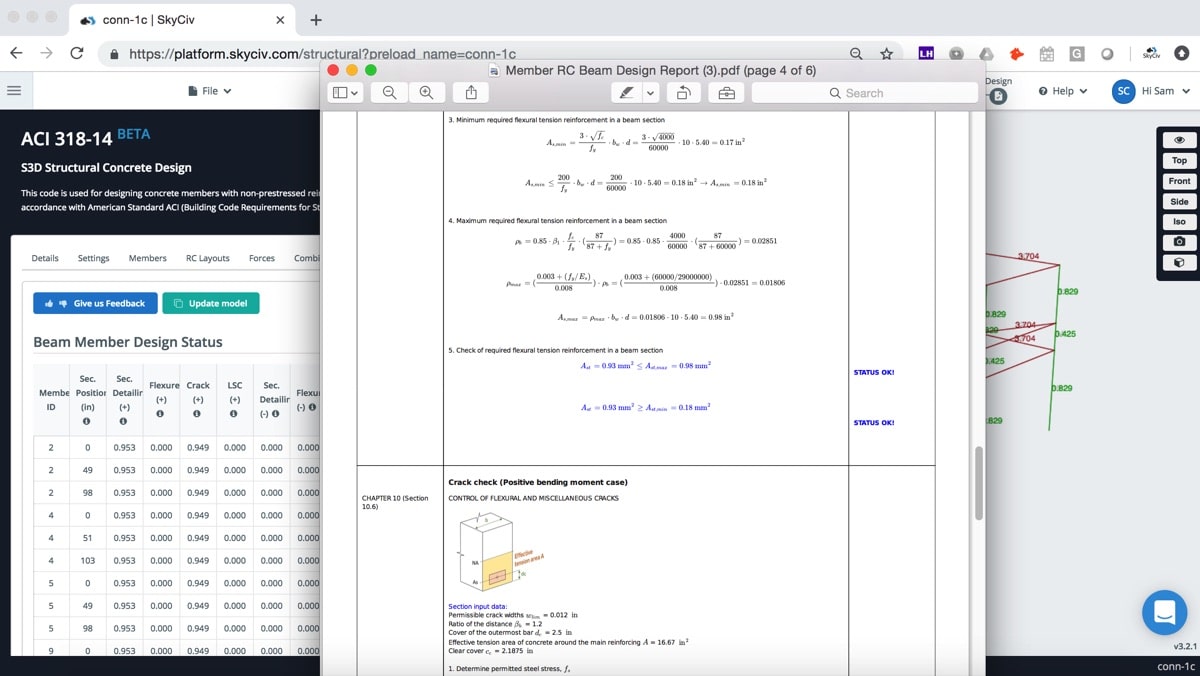
Example of our Reinforced Concrete Design Open Reporting
It also helped engineers avoid the risk of blind dependence on structural software. Reviewing the design reports allows engineers to confirm the design calculations step-by-step, whilst still applying their intuition and experience to the solution.
Answer Questions Faster
Another pain point was waiting days (if not weeks!) for software developers to answer our questions about the design calculations. One of our value propositions here at SkyCiv is that we’re committed to providing our users with answers quickly. This is evident in our real-time fast support via our Live Chat Support which on average has a 36 minute response time.
We realized early in our product development, that engineers have questions about how the software works. What values are being used in the calculations? Which design code clause is the software referring to? What logic is being used? Rather that repetitively emailing our users with these answers, we thought – why not just show them the calculations?
Supporting the API
An API is essentially designed to be a black box. Data in, data out. However, we thought there’s a better way to do this. We can still give you the answers you want, but through the open reporting of our design software, we can also include detailed calculation reports as well.
So via our API, you’ll receive two pieces of information; (1) the final result (2) the PDF report, showing step-by-step calculations.
Which of our Software is White-Boxed?
The short answer is most of our design software has open, step-by-step PDF reporting. Specifically:
- Steel member design software – AISC, AISI, EN3, CSA, BS 5950
- RC Design Software – ACI 318, AS 3600, EN2, CSA A23, BS 8110
- Connection Design – AISC 360, EN3
- Wind/Snow Loading Software – ASCE, AS/NZ 1170, NBCC, EN1991
- Foundation Design Software – ACI 318, AS 3600
If you’d like to see our open reporting in action, all of this software is available under the Free Trial for SkyCiv Professional which you can register for on our homepage.
Giving Engineers what they Want
As structural engineers signing off on the project, or even handing off the project to a senior P.E, you need to have confidence in your result. Not only that, you want to be able to work quickly, by having the information you need readily accessible.
Overall, I think it comes down to giving Structural Engineers what they want. The industry has asked for open reporting and transparent designs, and we as a company have delivered. Try SkyCiv today and experience our commitment to giving engineers what they want.
CEO and Co-Founder of SkyCiv
BEng (Civil), BCom


